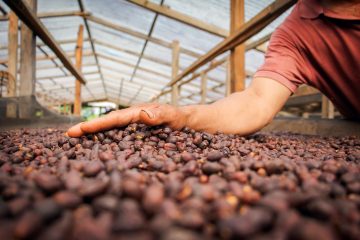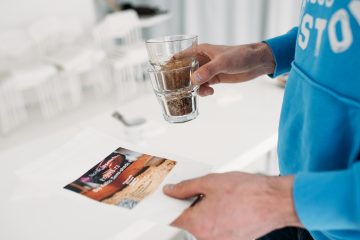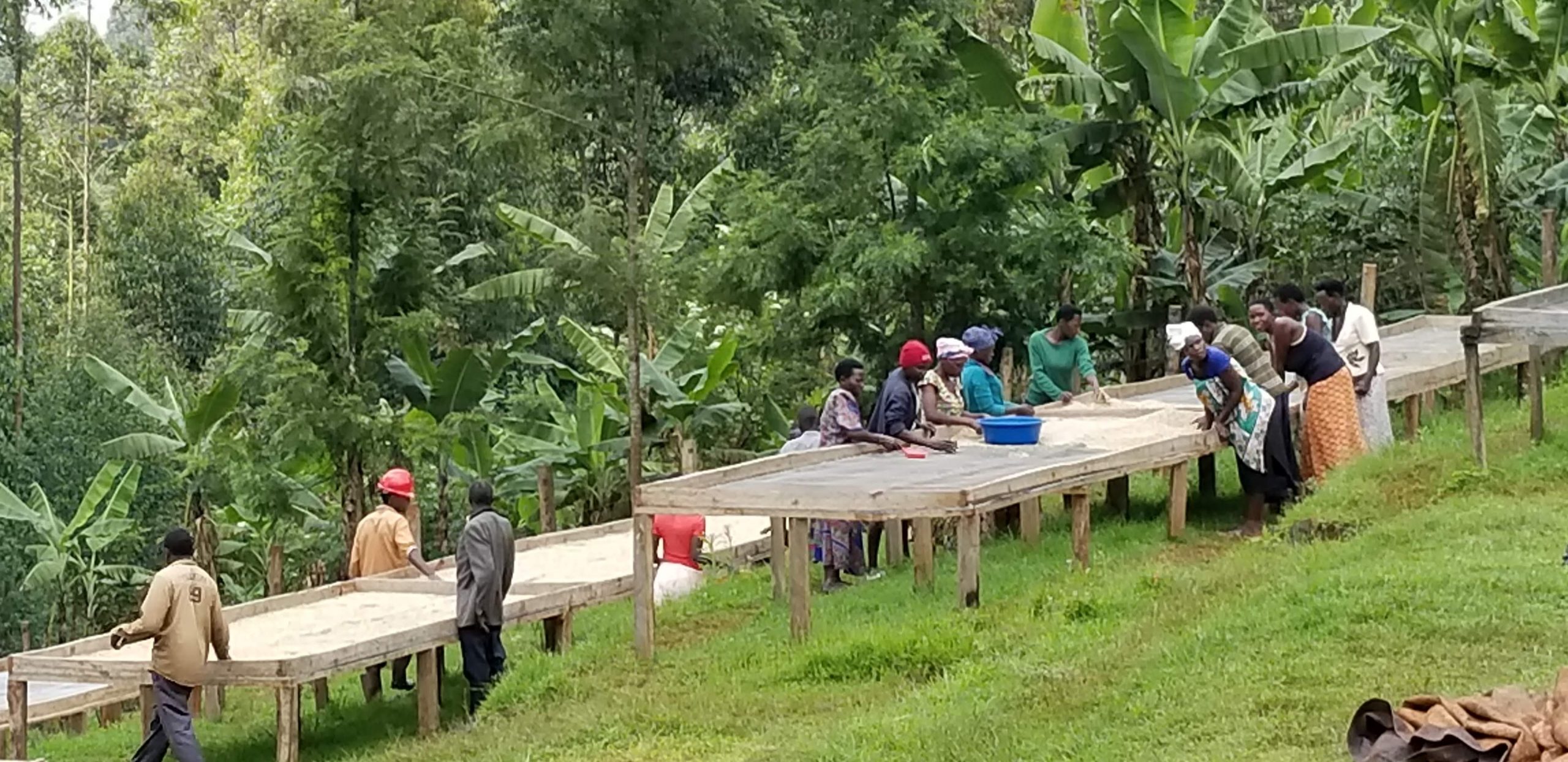What was previously our buying department is now a separate company, Tropiq. In addition to sourcing for Nordic Approach, Tropiq manage large volume sourcing for customers wanting to work more directly at origin. Learn more about Tropiq here.
Our East Africa buyer, Alexander Lenouvel Hansen, is detailing the hard work of a coffee buyer on the Tropiq blog. This is Part 4 in a series of posts called “What Does A Green Coffee Buyer Do.” If you haven’t read the previous posts, we recommend you start here, Part 1: Planning
What you taste is not necessarily what you get.
I previously gave a small insight into cupping fresh coffees by comparing the experience to that of tasting wine, and the questions I ask myself in the process. As a buyer though, when starting to select coffees, flavour is just the beginning. There are far more layers to making a decision than just flavour. The value chain contains many checkpoints and several things can happen along the way. We’re dealing with a fresh moving product after all.
While in Ethiopia on this first trip to cup the fresh coffees, I have to be aware of what kind of sample is on the table.
Type samples
Type samples represent the general flavor profile of a region, station or private farmer. Often they are a parchment sample of the first grade 1 of the season and they begin arriving in Addis in mid-to-late January.
This sample is provided to give buyers an idea of the overall quality and potential of the supplier. Even though I am cupping the coffee in Addis, it’s possible that the coffee is still on the drying beds at the washing station or farm.
I cup type samples to get an idea of the coming harvest. Some years the cherry development is great, the trees produce a good yield and farmers deliver high quality. Other years heavy rains prevent proper development of the cherry, yields are low, farmers are desperate and quality fluctuates enormously. Type samples gives me a good idea of what kind of year this is.
In a challenging year, type samples will typically contain more defects: quakers, unripe cherries, phenols and other problems. Coffee will taste more astringent and gritty with an unripe character and without much sweetness or acidity.
In a good year coffees will show more depth, have a good level of fruit, a clear acidity, high level of sweetness, positive tartness as described in the last blog post, and consistent cups throughout.
For me, the common denominator when cupping type samples is structure.

Offer samples
Offer samples arrive in late January and continue throughout the season. They represent lots that have been dried and bagged, but they haven’t yet arrived in Addis Ababa. Instead they are sitting in a warehouse close to the farm or washing station.
Exporters are pushing me to make a decision on this coffee, but no matter how exciting these samples may be, I have to exercise some restraint. The offer sample gives me a clearer indication of the final coffee, but offer samples can also be deceiving.
Here’s a scenario: Starting in late December, huge quantities of parchment have been delivered to the local or regional warehouse on a daily basis. Every day the piles of bags in the warehouse get bigger. What was a 100-bag day lot is now a 500-bag week lot, to save space and administrative work.
By late January we have five week’s of coffee piled up. A staff member at this warehouse is asked to get an offer sample of this lot, so they take a sample from a random bag on the edge of the pile. The offer sample is marked “Lot 1”. Let’s assume I fall in love with this coffee, and commit, then and there, to buy it.
Week’s later, when the enormous pile of bags arrives in Addis, it is divided into three lots. One ends up in my container, the other two are sold to different buyers. Which of those three lots did my sample come from? Did it come from a bag that ended up in my container, or someone else’s?
What if the coffee that arrives is not the same as the offer sample I cupped and fell in love with? Can I cancel a contract based on profile only?
Obviously this is a situation I want to avoid, which is why we prefer to make our final buying decisions based on the stocklot (see below). However I can still make a commitment to a supplier based on the offer sample, which will also put us first in line when coffees arrive in the main warehouse in Addis Ababa, that is, I can pre-contract the coffee.

Pre-contracting
Pre-contracting is making a commitment to a supplier to buy a certain volume from a region or washing station managed by this supplier.
Tropiq has several long standing relationships with exporters and washing stations in Ethiopia. With these companies we go straight to pre-contracting at the beginning of the harvest, as we are confident these suppliers can provide great coffees. The advantage for us is that we have the first right of refusal for the supplier’s coffees as they arrive in Addis.
However we are always looking for new partners. Ethiopia is constantly changing, laws are tightened or relaxed, and new opportunities bring new players to the market. Type and offer samples are a great way to discover new potential partners. If these samples look promising, we might decide to pre-contract with a new company. Again, this gives us first access to the arriving stocklots.
Stocklot samples
A stocklot is a sample from the warehouse/dry mill in Addis. It hasn’t yet been processed for export, but it will be a more accurate sample representing, for example, a 100-bag lot. These samples are a more accurate representation of the coffees we buy as the sample is often drawn from multiple bags representing the 100 bags in that lot.
These samples start arriving our lab early February. We prefer to make our final selections based on stocklots, rather than type or offer samples, but I have to move quickly. The coffees these samples represent are rarely available to buy for more than a week.
The time I lost the stocklot race
I once fell in love with a washed coffee from West Arsi. It was unlike anything I had ever tasted before: black currants, blueberries and tons of purple plum. It was Friday afternoon when I first cupped this sweet creation, and I planned to book the coffee immediately, but my flight home was leaving that night and I was rushing to pack all the samples I needed to bring back to HQ.
I landed in Oslo on Saturday, crashed and slept until Monday morning. First thing in the office that day I re-cupped the coffee — I wanted to show it off to my colleagues and they all agreed I should book it. On Monday afternoon I called the supplier, a little giddy with excitement, but my beloved coffee was gone. The entire lot had been sold to another buyer the day before.
I learned my lesson. If I like a coffee and it fits our quality standards, I book it, mill it, bag it, and ship it. The longer I wait, the greater the risk of the coffee being replaced with another lot. This would mean restocking all my samples and going through the whole selection process again, not to mention the work of mending my broken heart.
Pre-Shipment Samples (PSS)
The PSS represents coffee that is in an Addis Ababa warehouse, bagged and ready to ship. It is the exact same coffee as the stocklot sample, but the supplier has milled, screened, graded and sorted the coffee according to instructions that we agreed to in our contract.
Incorrect processing of the coffee can seriously affect the final profile, so I cup the PSS to decide whether or not the coffee will go in our container. If I’m not happy with the PSS, I may ask the supplier to re-process the coffee, that means they must mill, screen, grade and sort again. In the worst cases, I reject the coffee.

Getting the coffees on the water
It might seem like the hard work is done. I have cupped through hundreds of samples, beginning with the type samples back in January and February, through to the PSS which I have approved. The coffee is ready to ship, so I can relax, right?
Ah, if only it were so. In other origins this can be relatively straightforward, but Ethiopia is unlike every other origin. Now that the coffees have been selected, the real hard work begins.
Read Part 5: Get the coffees moving.



0 Comments